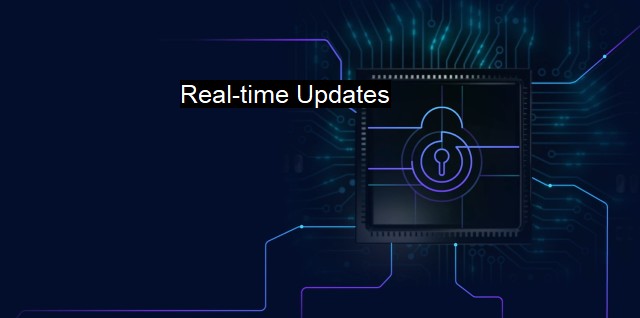What are Real-time Updates?
The Vital Role of Real-Time Updates in Cybersecurity and Antivirus Software: Protecting Against Malware and Online Threats
Real-time updates in the context of cybersecurity and antivirus refer to immediate and continuous updating of software to strengthen online security measures. These updates are designed to adapt as quickly as possible to emerging threats, offering instantaneous protection against newly identified malware, viruses, and other forms of cyberattacks."Real-time" signifies an immediate response. Almost as soon as any new information is presented, real-time updates apply this information to ongoing operations, ensuring that the device is adequately protected. In a world where new diverse threats emerge daily, the importance of real-time updates in cybersecurity measures cannot be stressed enough.
In the daily skirmishes of cybersecurity, antivirus software acts as a protective shield. It's the primary line of defense erected to protect devices from unwanted intrusions. Antivirus software employs mechanisms and algorithms to identify and fend off any forms of cyberattacks, both known and fresh. such dangers are known to morph and evolve continually. This is where real-time updates become critical. They are designed to facilitate the software’s evolution in response to these modifications swiftly and surely.
One significant advantage of real-time updates is their ability to cope at the growing speed of cyber threats. Cyber criminals are relentlessly and rapidly generating new exploits, variants of viruses, and other forms of malware. Traditional updating methods can leave lapses of vulnerable moments, possibly culminating into a profitable opportunity for these threat actors. On the other hand, real-time updates snatch away the opportunity even before it can be noticed.
Real-time updates are set to execute automatically and frequently, providing an automatic upgrade of the antivirus's knowledge base about all fresh threats. Not only does this keep the software effective, but it alleviates the user of having the burden of ensuring up-to-date software manually. Also, real-time updates do not require a complete installation of the software, unlike full-version updates that are performed once in a while. Its primary goal is to offset new threats.
Nonetheless, for real-time updates to work optimally, an active network connection is preferable. This is because these updates happen over the servers via the internet. They fetch the necessary protection patches for potential threats reported worldwide and identified by cybersecurity researchers. Be it a potential worm tucked underneath an official email or a new ransomware looking to sneak and encrypt your data, real-time updates ensure the timely deliverance of these warning signs and solutions into your antivirus system.
The antivirus then deciphers the structure of these foreign threats and creates an immune response to such, averting around-the-clock dangers. Therefore, through real-time updates, the cybersecurity tools adapt dynamically to protect against an ever-changing threat landscape.
Real-time updates are pivotal elements in reinforcing cybersecurity. They serve as the anchor that continues to outfit the protective software's hull structure against the fierce tides of cyber threats. Real-time updates ensure in capturing the critical information needed to thrive in the ever-evolving world of the internet, helping to revise and resize security solutions based on the immediate threatscape. These updates are crucial for both professional and personal use, helping antivirus weapons stand firm in facing the perpetual onslaught of the hackers. Hence, real-time updates are necessary for enhancing, implementing and maintaining a robust defense system against various malicious activities tormenting cybersecurity.

Real-time Updates FAQs
What are real-time updates in cybersecurity and antivirus software?
Real-time updates refer to ongoing updates that are made to the software in real-time as new threats emerge. These updates help to ensure that your antivirus software is always up-to-date and able to protect your computer against the latest threats.How do real-time updates work in cybersecurity and antivirus software?
Real-time updates work by constantly checking for new threats and malware. As soon as a new threat is identified, the antivirus software will receive an update with the latest information about the threat. This allows the software to identify and protect against the new threat as soon as it appears.Do I need real-time updates for my antivirus software?
Yes, real-time updates are critical for ensuring that your antivirus software is able to protect your computer against the latest threats. Without real-time updates, your antivirus software may not be able to detect and protect against new threats, leaving your computer vulnerable to infection.How often should I expect real-time updates from my antivirus software?
The frequency of real-time updates can vary depending on the software and the threat landscape. However, most antivirus software providers release updates several times a day to ensure that their users are always protected against the latest threats. It is important to ensure that your antivirus software is set up to receive automatic updates to ensure that you are always protected against the latest threats.| | A | | | B | | | C | | | D | | | E | | | F | | | G | | | H | | | I | | | J | | | K | | | L | | | M | |
| | N | | | O | | | P | | | Q | | | R | | | S | | | T | | | U | | | V | | | W | | | X | | | Y | | | Z | |
| | 1 | | | 2 | | | 3 | | | 4 | | | 7 | | | 8 | | |||||||